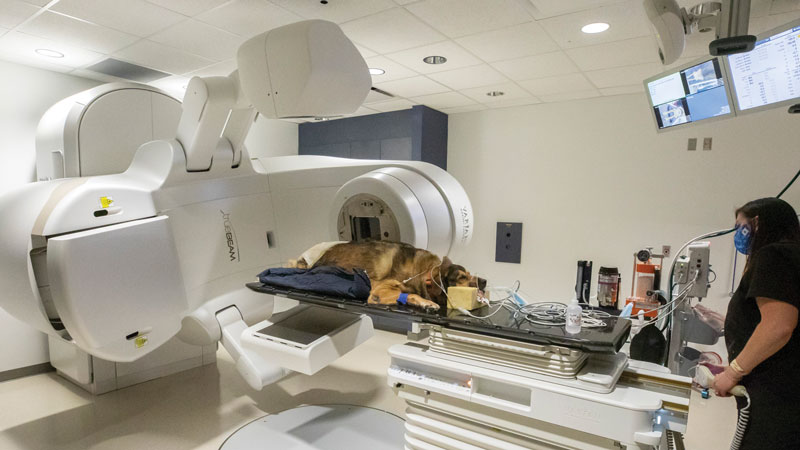With every cancer diagnosis there are challenges of local tumor invasion and of systemic control (metastasis). The classic anti-tumor treatment modalities (pillars) include surgery and radiation for local control and chemotherapy for systemic control, with immunotherapy as the fourth pillar of cancer treatment. The intersection of multimodality cancer therapy usually offers the best possible prognosis.
Veterinarians in general or specialty practice will encounter patients for whom radiation can significantly improve both quality and quantity of life. The Varian® TrueBeam® linear accelerator at the University of Illinois can safely deliver radiation in as few as 1 to 3 fractions. The non-invasive nature of radiation offers an advantage over surgery for some patients.
Radiation therapy works by damaging the DNA of cells, causing strand breaks. Because cancer cells may either divide or lay dormant, effects of radiation can be seen at various times. When a cell eventually attempts mitosis, the damaged cell undergoes a mitotic catastrophe and death. Because of this, tumors can shrink slowly over weeks to months, or sometimes simply stop growing. Lymphocytes are unusual in that they can undergo a rapid intermitotic death.
Radiation is divided into smaller treatments called fractions. This allows the normal tissues to tolerate the radiation, and slowly dividing cells have time to execute DNA repair.
Definitive or Palliative Protocol
Radiation can be administered in a definitive or a palliative protocol.
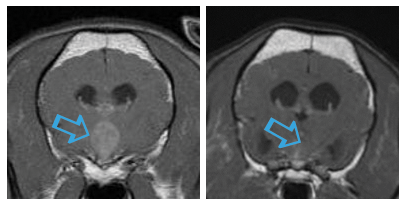
With definitive protocols, the goal is to give as much radiation to the tumor as the normal surrounding tissue will tolerate. Conventional protocols divide the total dose into small daily fractions for a total of 18 to 20 treatments in most cases.
With palliative protocols, the goal is to administer a total dose of radiation that will provide some relief from the pain, bleeding, or other effects of the tumor. These protocols typically consist of a larger dose per fraction given less often and to a lower total dose (often once or twice weekly for a total of 4 to 6 treatments).
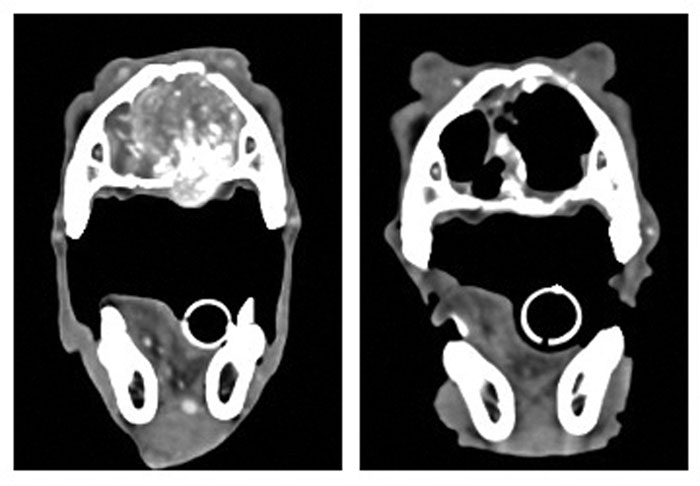
The benefits of definitive protocols include a better chance for tumor control and less risk of permanent late side effects. Palliative protocols involve fewer trips to the hospital, achieving pain relief, and less risk of short-term side effects.
Newer machines such as the TrueBeam® can also perform stereotactic body radiation therapy, which uses precise and rigid positioning with CT-guided confirmation and sophisticated software to allow the equivalent effects of many, smaller fractions to be delivered in a few (i.e., 1 to 5) larger fractions.
Case Selection
Radiation therapy complements surgery by treating the tissue that cannot be resected. If incomplete histologic margins are identified after tumor removal, radiation can be very effective in treating remaining cells.
Success is greatest when radiation is used to treat microscopic rather than macroscopic disease. Additionally, unresectable tumors might be good candidates for radiation therapy. This can include tumors in inaccessible locations such as brain and nasal tumors, as well as tumors that are located adjacent to anatomic structures that cannot be removed, such as the larynx, as can be seen with ectopic thyroid carcinoma.
Side Effects
Side effects of radiation occur within the treated field and include both short-term (acute or early) and long-term (chronic or late) effects.
Early effects will happen in most animals to some extent, are temporary, and will heal in all animals. Early effects begin during the second half of a course of radiation treatment and will be at their worst toward the end or just after completion of a course of radiation therapy. Healing occurs over the following few weeks.
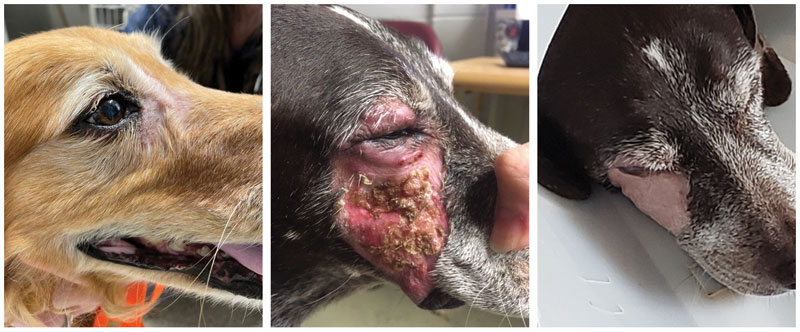
Late effects are uncommon to rare and are permanent. They occur at least 3 months and often more than 6 to 12 months following radiation treatment. In any location, late effects can include osteonecrosis and secondary cancers (risk ~3%).
Common acute effects that are clinically important include moist desquamation of the skin and mucositis of mucous membranes, if they are in the treatment field.
Late effects of most concern include osteonecrosis, cataracts, and demyelination, depending on which critical structures are in the treatment field.
Radiation and Immunotherapy: Current Clinical Trials
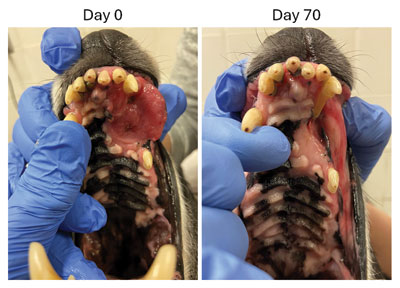
Manipulation of the immune response can train the patient’s immune system to seek and destroy cancer cells to treat both the primary site and any possible metastasis. At the University of Illinois, the combination of radiation and immunotherapy is being actively researched in companion animals for cancers such as melanoma, osteosarcoma, and metastatic cancer to the lungs. This research includes both cytokines that signal the immune system and checkpoint inhibitors that allow the immune system to attack cancer cells.
For oncology consultations, please call the referral coordinator at the Veterinary Teaching Hospital at 217-333-5311. To view current oncology clinical trials, visit: go.vetmed.illinois.edu/OncoTrials
By Kim A. Selting, DVM, MS, DACVIM (Oncology), DACVR (Radiation Oncology); Joanna M. Schmit, DVM, MS, DACVIM (Oncology)

